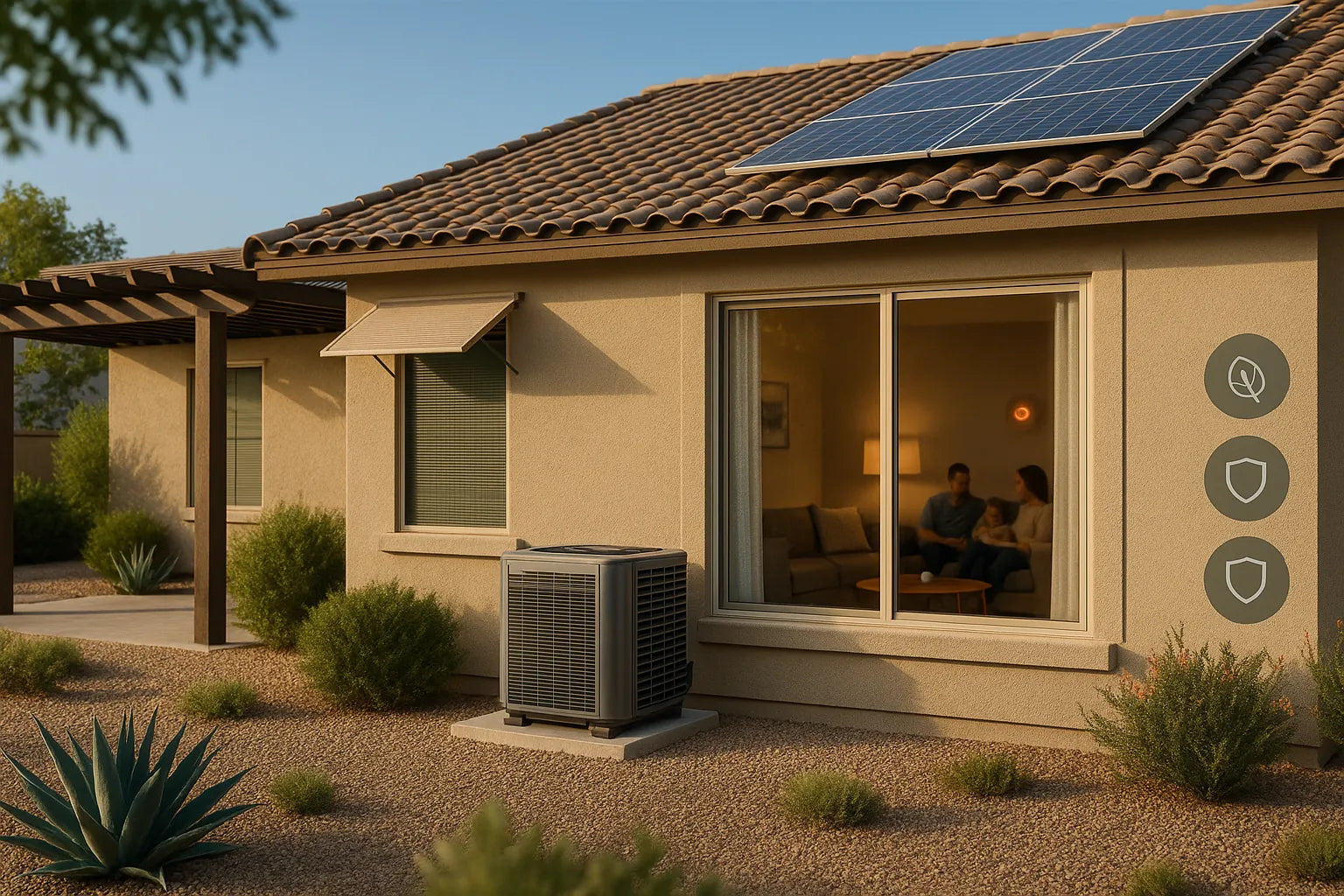Understanding the Zone 3B Climate Advantage
Zone 3B is defined by low humidity, intense sun, and wide diurnal (day-night) temperature swings often 25°F or more. While this can strain a poorly designed HVAC setup, it’s also perfect for certain passive and mechanical strategies.
By using nighttime cooling, thermal mass, and variable-speed HVAC systems, you can take advantage of nature’s free temperature shifts. For example, a home in Palm Springs that uses night flushing may be able to delay AC use by several hours each summer morning, significantly cutting energy use.
Explore high-efficiency R-32 systems here.
Night Flushing: Cooling with the Evening Breeze
One of the most cost-effective strategies in Zone 3B is ventilative cooling, or “night flushing.” When evening temperatures drop below 67°F, you can bring that cool air inside to replace the day’s heat.
How it works:
-
Use whole-house fans or operable windows
-
Time ventilation for peak cool hours—usually after 9 p.m.
-
Close windows and blinds by mid-morning to trap cool air inside
This approach reduces HVAC run time and keeps interiors more comfortable through the hottest part of the day.
See ductless mini-splits ideal for supplemental cooling.
Thermal Mass: Storing Cool for the Day Ahead
Thermal mass materials like concrete, stone, and adobe absorb heat during the day and release it at night. In Zone 3B, this works perfectly alongside night flushing.
Key tips for thermal mass design:
-
Position south-facing windows to gain winter heat but shade them in summer
-
Place insulation outside the mass walls to allow natural heat exchange indoors
-
Combine with a variable-speed HVAC system for fine-tuned comfort
Homes with thermal mass can stay cooler for longer without running the AC non-stop.
Find packaged HVAC systems that pair well with passive cooling.
Why Variable-Speed HVAC Wins in Zone 3B
Standard single-speed systems cycle on and off, often overshooting temperature targets. In a climate with big swings, that’s inefficient. Variable-speed compressors and fans adjust gradually, matching the exact cooling or heating load needed.
Benefits include:
-
Smoother indoor temperatures
-
Lower energy use during partial-load hours
-
Better humidity control during rare monsoon conditions
Shop variable-speed heat pump systems.
Zoning for Targeted Comfort
When one side of your house bakes in the afternoon while the other stays cool, zoning makes sense. Ductless mini-splits and multi-zone heat pumps allow you to set different temperatures for different rooms or floors.
Real-world example: In a two-story Zone 3B home, zoning can prevent the upstairs from overheating while keeping the downstairs from freezing.
Browse ductless mini-split zoning solutions.
Solar Shading and Advanced Glazing
Blocking unwanted solar heat before it enters the home reduces HVAC strain. Awnings, exterior shutters, and reflective films are simple yet effective. For new construction or upgrades, low-e glazing can cut solar heat gain without sacrificing natural light.
-
Shade south and west-facing windows in summer
-
Use light-colored exterior finishes to reflect heat
-
Consider deciduous trees for seasonal shading
See accessories to improve HVAC efficiency.
Managing Humidity in a Dry Climate
Zone 3B is generally dry, but monsoon season can bring sudden humidity spikes. A good HVAC system should handle both extremes—adding moisture in winter and removing it when humidity rises.
Pro tip: Variable-speed systems often have better humidity control modes compared to single-stage units.
Explore air handlers with advanced humidity control.
Sizing Matters: Avoiding Over- and Undersizing
Oversized systems cool too quickly and leave the air humid; undersized ones can’t keep up on the hottest days. In Zone 3B, proper sizing is critical to balance peak demand with energy savings.
Get a Manual J load calculation before buying. This accounts for:
-
Window size and orientation
-
Insulation levels
-
Thermal mass effects
Integrating Renewable Energy
With so many sunny days, Zone 3B is ideal for solar-assisted HVAC systems. While rooftop solar primarily offsets electricity costs, pairing it with a high-SEER variable-speed system maximizes savings.
-
Install shading on outdoor condenser units to improve performance
-
Schedule major cooling loads during solar production hours
See residential packaged heat pump systems.
Professional Installation and Maintenance
Even the best equipment underperforms without proper installation. A qualified HVAC technician will ensure:
-
Correct refrigerant charge
-
Proper airflow balancing
-
Sealed and insulated ductwork
Regular maintenance—especially coil cleaning, filter changes, and refrigerant checks keeps systems running at peak efficiency.
Book a professional installation quote by photo.
Tips for Zone 3B HVAC Success
-
Use programmable thermostats to match cooling cycles with your daily routine
-
Pair night flushing with morning blinds/curtain closure to trap cool air
-
Upgrade insulation to work alongside passive and mechanical cooling
-
Maintain your HVAC twice yearly—spring and fall







